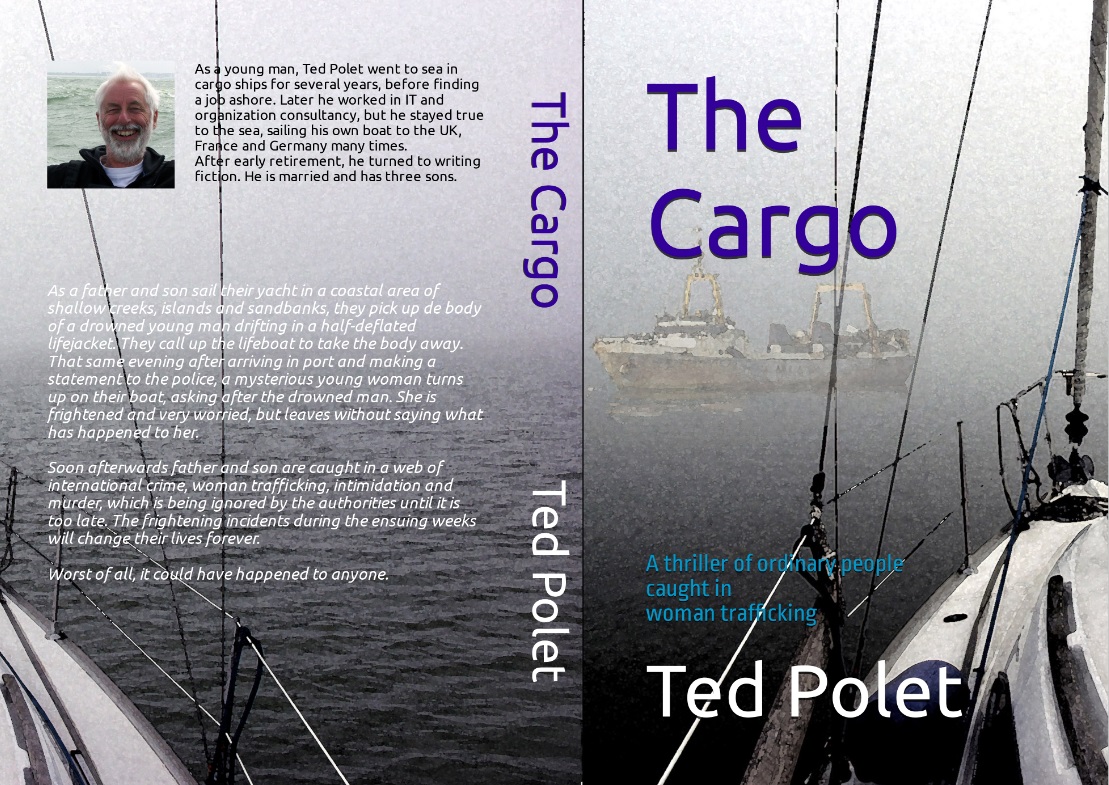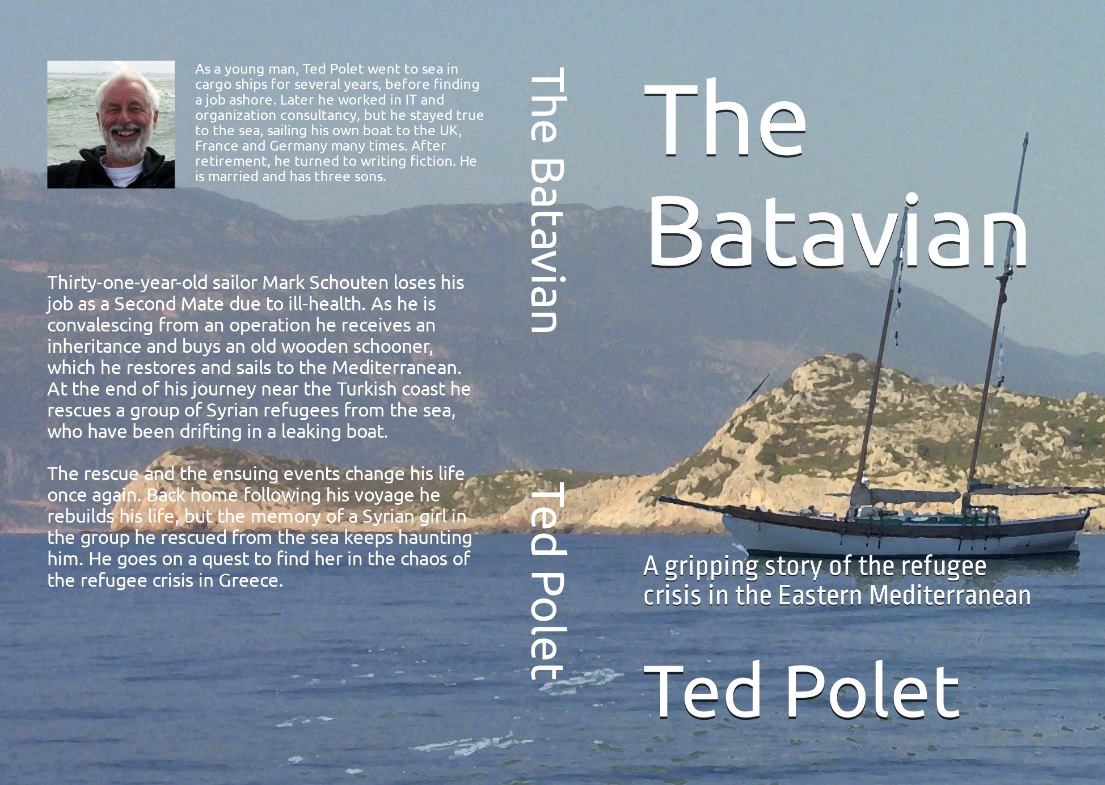History repeats itself
Writing isn’t always fun, as the title of this blog implies. Up to now I didn’t want to write of the new Gaza war, because there are no words to describe the mutual cruelties being inflicted. But perhaps it is good to try and learn from history - an essential task for an author. Many years ago, I experienced some Middle Eastern history at close quarters.
Yom Kippur 1973
Exactly 50 years ago, I arrived in the Middle East in a Dutch cargo vessel, shortly after the Yom Kippur war, in which Israel was surprised by an invasion on two fronts from Syria and Egypt, and barely managed to save its skin.
 |
| My ship, the mv Oostkerk, prior to departure from Rotterdam in June 1973 |
The (then) Dutch Defense Minister Henk Vredeling secretly supplied arms to Israel, even without telling his boss, Prime Minister Joop den Uyl. When Vredeling blabbed on TV, naturally the Arabs were furious and imposed an oil boycott against Holland. And my ship was boycotted when we arrived in Latakia, Syria. We barely escaped unharmed.
Three quarters of our cargo, which came from India and Sri Lanka, was destined for Lebanon, Syria and Libya. Having discharged some cargo in Barcelona, Marseilles and Genoa (where I celebrated my 22nd birthday), we continued to Beirut, still uncertain about the situation awaiting us. Halfway between Crete and Cyprus we passed a US Navy force which included an aircraft carrier.
Our Third Mate plotted large forbidden areas in the chart of the Levant, war zones full of minefields - there were only ‘safe’ corridors to Beirut and Latakia. At the time they were still fighting on the Golan heights.
 |
| Beirut, November 1973. It still looks peaceful, but tension in the city could be felt and civil war was about to break out. |
We cranked the lifeboats outboard, ready for launching in their old-fashioned davits, and closed our only watertight door, that between the engine room and the propeller shaft tunnel. It was clear that we were headed for a war zone. How it ended can be read in my website:
https://www.tedpolet.com/epages/zv08.htm
It could be a theme for a new book - perhaps it will appear at some stage...
An eye for an eye
50 years hence, following intifadas, continous rocket attacks, terrorism and cruel border wars, now we have seen a gruesome attack by Hamas in the south of Israel, followed by an equally gruesome retaliation war started by the Israelis, who are effectively carpet bombing a densely populated area to get at Hamas terrorists sheltering under the city. The scale of cruelty is mind-boggling, with thousands of dead on either side.
Who wants to understand the source of this conflict, should go back to the flight of hundreds of thousands of Palestinians from their lands in 1947-1949. Many were driven out by violence and terror by the newly formed State of Israel. An horrible example is the Deir Yassin massacre in 1947, perpetrated by Israeli murder squads, one of which (the Irgun) was commanded by Menachem Begin, later Prime Minister of Israel. Others left at the invitation of neighbouring Arab countries, who at the time may have thought to benefit from it. The Palestinians still refer to this as the Nakba, the disaster. Nowadays we’d call this ethnic cleansing, a word some people won’t thank me for. If you object, then please point out the difference to me. What’s in a name.
Following WW1, Syria, Lebanon and Palestine were designated a mandate area to be administered by the French and the British. In those days, urged by the Zionist movement and supported by the British (the Balfour Declaration), migration began of the Jewish diaspora to the Promised Land. And inevitably, soon the first tensions developed between the Jewish colonists and the Palestinian locals, who naturally viewed the colonists as invaders. When the British eventually put the brakes on immigration, Zionist militants turned on them.
Should we refuse the Jews a safe country, after having been ravaged by pogroms and the holocaust? Should we refuse the Palestinians a safe country of their own? Whoever has the answer, please tell me. The two sides are entrenched against one another, each held hostage by ideology and bitter hatred fed by a century of violence.
 |
| the results of a 1948 car bomb set off by Arab militants in Ben Yehuda Street, Jerusalem. |
The two-state solution, once advocated to return to the Palestine people at least part of their ancestral lands, probably is the only possible compromise. But how to get two uncompromising parties back at the negotiating table?
The theft of land, the de-humanisation and aggression by Jewish colonists in the Israel-occupied territories has continued for decades, feeding the monster of terrorism at the other side.
Meanwhile, foreign powers such as Iran, Russia, Qatar, Saudi Arabia and the United States are stoking the fire relentlessly, each with their own agenda.
I will not take sides, even though Western politicians fall over each other to express their support for Israel, ignoring the devastating retaliation war that is being waged by the Israelis against the terrorism of Hamas and similar groups. An eye for an eye - the spiral of revenge will never come to an end. It isn’t just Israeli children, but also Palestinian children who have a right to live.
All that remains for me is to express deep regret and sympathy with all the thousands of innocents to both sides, who once again fell victim to this almost insolvable conflict.
 |
| blood on their hands: talks in Qatar between the Iranian Foreign Minister and the Hamas leader Ismail Haniyeh, October 14 (source: CBC News.) |




